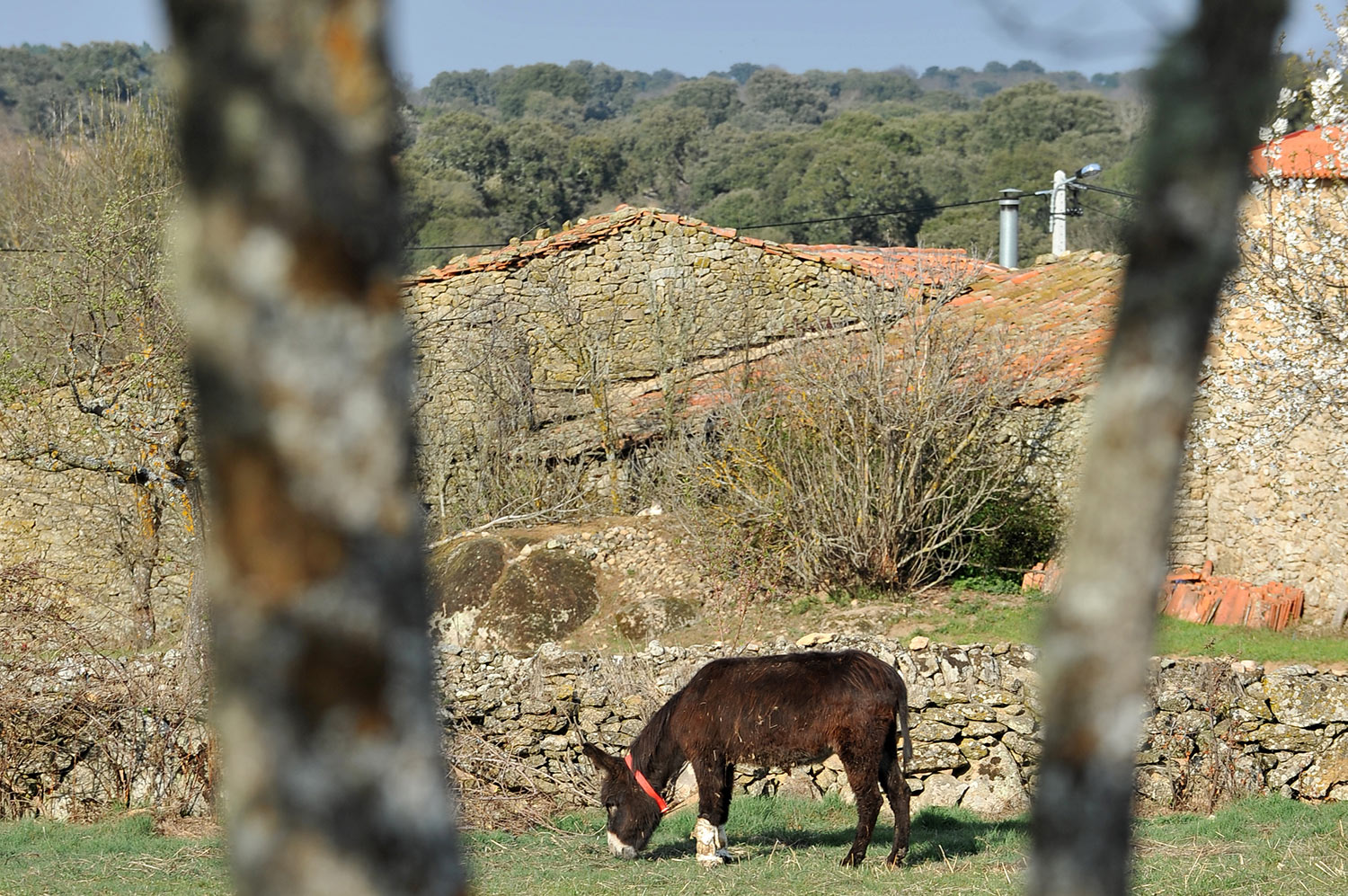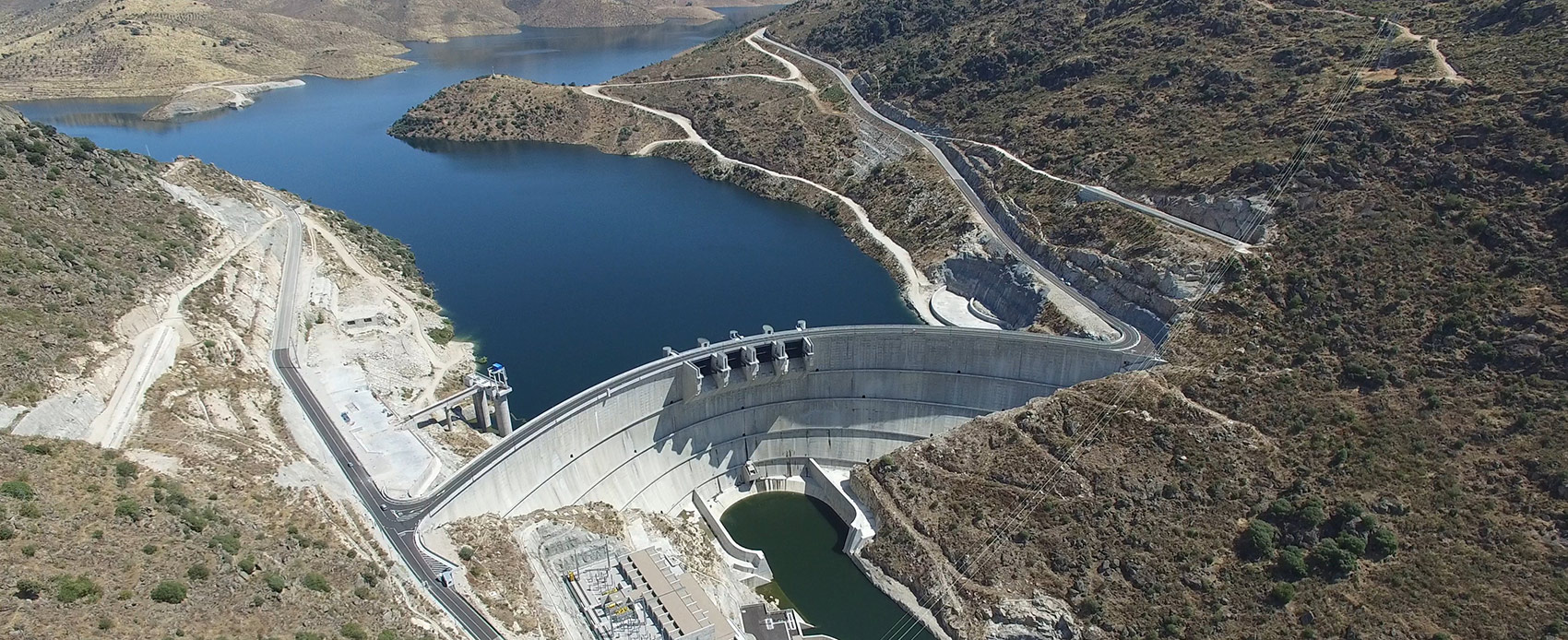Goal:
To eliminate residual impacts, or preferably to obtain global gains, and lead to the reversal of the natural tendency of environmental degradation of the territory.
The Baixo Sabor Hydropower Plant (AHBS) is located in Portugal, in the region of Trás-os-Montes. It consists of two counter-dams, with an installed capacity of 189 MW, and arises from the need to create a strategic water reserve on the upstream section of the Portuguese Douro to regulate the entire flow of the downstream cascade. The construction began in 2008. It started operating in 2016. The Environmental Impact Assessment (EIA) identified the existence of areas of great value for the conservation of nature and biodiversity located within the Natura 2000 network, which would be permanently affected. The Environmental Impact Assessment (EIA) process to which the Baixo Sabor project was subjected, followed the sequence of steps of the mitigation hierarchy: avoid, minimize, restore, compensate.
To ensure the last step, 11 compensatory measures were defined. The goal is to eliminate residual impacts, or preferably to obtain global gains, and lead to the reversal of the natural tendency of environmental degradation of the territory. An unprecedented challenge in EDP's history and even in the country because it is a 75-year commitment: the entire concession period of the hydroelectric plant, through a package of 57 conservation actions applicable to a territory with around 12,000 ha, equivalent to 12 thousand football fields, spread over nine municipalities, in an area equivalent to 4 times the area flooded by the reservoir.

With this dimension, the environmental compensation plan required innovative, ecosystemic and adaptive management approaches.
Multiple studies in the Environmental Impact Assessment phase served as a reference to characterize the baseline conditions and supported the definition of the set of deployment actions of compensatory measures.
During this process, EDP Produção, always under the supervision of the Comissão de Acompanhamento Ambiental da Construção (CAAC) *, realized that the conservation and environmental awareness actions proposed in the CM characterization studies reports lacked an enabling global vision of synergies and complementarities.
Given this, it began by designing an integration plan to increase its effectiveness in favor of local biodiversity. To this end, it established a technical-scientific assistance protocol with the Study Centre for Biodiversity and Genetic Resources (CIBIO-UP), thus ensuring independent and recognized monitoring.
As far as environmental awareness actions are concerned, EDP, recognizing the existence of internal know-how, has chosen to take on the design and implementation of a business case capable of bringing sustainability to the said conservation measures, through a long-term program of education for sustainability, aimed at 8th grade students. The Junto à Terra project is the result of this ambition, and the pilot phase developed in AHBS with introduced improvements is already in the planning stage to be extended to the municipalities in the Foz Tua Hydropower Plant territory.
At the same time, EDP clarified its vision for the sustainability of the Baixo Sabor project. Success in the medium and long term would have to result in the creation of value for the Group and solid contributions to the promotion of local development.

The solution that has been found was to integrate the implementation of compensatory measures into a territory management approach. An innovative concept that implied using the nature conservation and biodiversity plan as the basis for the recovery or recreation of compatible and enhancing economic activities of the region's natural heritage.
It also implied the creation of a lasting strategic alliance with all local development agents, from official entities such as regional authority, associations and owners. Here, the highlight is the involvement of three local NGOs ** (AEPGA, APFNT and PALOMBAR), which, through a protocol, have assumed a central role in the implementation of actions on the ground and by bringing the territory and interested parties together. Protagonists of a mediation that proved to be crucial to put into practice the pro-biodiversity model of management and conservation of the socio-ecological systems of this territory.
The implementation phase started in October 2012. Sabor's natural heritage conservation plan has 57 actions, and currently includes more than 2,000 partnerships, mostly with agroforestry owners (over 1,800), covering an approximate area of 12,000 ha of land.
Thanks to the collaborative methodology, it was possible to delimit and implement management measures of 2,200 ha of priority habitats; 100 ha of riparian forests; 209 ha of seedlings for wildlife; 287 ha of clearings; distribute 60 livestock dogs to protect herds against wolf attacks, a species to protect; recover 28 traditional dovecotes; build the Environment and Animal Recovery Interpretative Center; activate fire risk reduction plans; grazing areas, among many other tangible and intangible assets, which have been created in the meantime. The execution and monitoring of the 57 actions that integrate the 11 CMs have already generated the creation of 20 direct jobs.

The knowledge production is another of the great assets resulting from the approach defined for Sabor. Thousands of data on the biodiversity of that region, collected and to be collected throughout the duration of the Conservation Plan, are a source of essential information for effective management.
In order to ensure reliable information, it was important to standardize methodologies for collecting and processing it. The Baixo Sabor Biological Data Systems (SIBBS), where updated data are periodically uploaded, was created, allowing to monitor the evolution of the state of the local ecosystems. It is on the basis of this assessment that possible adaptations of the strategy will be decided in order to meet medium and long-term objectives.
As proof of the recognition of the quality of this long-term information collection process, Baixo Sabor was classified as a LTER (Long Term Environmental Research) site.
Sabor data thus serves as raw material for third parties. Through SIBBS, EDP shares data with international platforms, which is also available for public reference. Investors and decision-makers, national and international, or the general public, have in the information sharing platforms, created or fed by EDP, a precious instrument to develop scientific knowledge, legislation, or simply to promote information and awareness actions that reinforce the value perception of Baixo Sabor's natural heritage for sustainable, local and global development.
The Sabor Environmental Conservation Plan is one of the contributions of the EDP Group to Goal # 15 - Protecting Earth Life, from the United Nations 2030 Agenda.

* As part of the EIA process, the Comissão de Acompanhamento Ambiental da Construção (CAAC) was established with NGO representatives, national, regional and local authorities, the scientific community, and the promoter.
** Local partners: Association for the Study and Protection of Donkeys (AEPGA); Association of Northeast Trás-os-Montes Forest Producers (APFNT); PALOMBAR - Association for the Conservation of Nature and Rural Heritage.